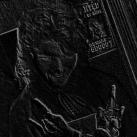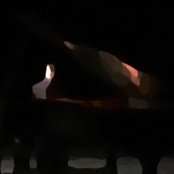Search the Community
Showing results for tags 'sonata'.
-
Many classic forms were adapted in the 20th century. New ones were invented. Messiaen's musical world is amazing. Check what intervals are the best for him to build a cadence! Regarding the sonata, he says: "having written some absolutely regular sonata-allegros, we shall state that one thing in that form has become obsolete: the recapitulation. Then we shall try once more to keep what is most essential: the development. there are two in a sonata-allegro: the middle, modulating development; the terminal development, generally built over understood dominant and tonic pedals. We shall be able to write pieces made of this terminal development alone". And he gives this example from les Enfants de Dieu (from la Nativité du Seigneur): First element over a dominant pedal in B major and development A great fortissimo cry upon a sort of schema with augmentation of the theme A tender phrase, forming the conclusion, established over a tonic pedal in B major. You can hear this part here: In his writings, he gives additional examples of this kind of technique and new "free forms proceeding from the development of the sonata-allegro". Some thoughts about all this: Having in mind that tonality in Messiaen cannot be understood in strictly classic ways, he uses a contemporary technique (as Debussy did) to establish tonal centers and a relationship between them: the pedal tone. It's interesting how Messiaen is not interested at all in parts without development, ruling out at first glance the recapitulation ("obsolete") because it has no modulation nor development. It's also interesting how he takes only a section (or better said, the concept of a section) of the sonata-allegro, to build up his own coherent form. In my opinion, this is related to the big idea in Messiaen of "progressive music": non retrogradable rhythms or added values, non transposable modes... All of them have to be with that idea on not allowing the music to fall in the repetition patterns where classic music had rely on. This is just an example of what Messiaen did with forms. He talks about fugue, an other forms he was interested in, some of them fresh and new (Bird son), some old (plainchant). Is this concept interesting for you? For me, it is. It opens more possibilities of organising music material.
- 10 replies
-
- 1
-

-
- sonata
- sonata-allegro
-
(and 2 more)
Tagged with:
-
Took me long enough to share this with you... the timing is also quite good if you consider some of my explanations I guess 01 hw1.mp3 Introduction Context Primer for the music itself Sorry for the walls of text lol, if you prefer just let the music speak for itself it is also fine.
-
Music hw sonata new fixed again wm 4.pdf Though there is some skill issue with my playing lol... Context Hw4 maybe better.mp3
-
Since it follows directly "attaca" from the first movement, I'm uploading both here.
-
-
A wonderful video sprang across my YouTube feed a few days ago. All the information in the video was news to me -- essentially, the claim is that we've been playing the Beethoven "Moonlight Sonata" the wrong way for two centuries, inspired by a poor nickname that really doesn't fit the piece at all! The professor's fresh interpretation of the first movement at the end of the video suddenly inspired me to try to orchestrate the piece, as I was having a lot of interesting ideas I thought I might try in order to create a really unorthodox interpretation. Before this week I had always thought Moonlight was a sort of cliched piece, but the professor brought it back to life and showed me it's famous for a reason.... The work was surprisingly quick, even though I was also trying Musescore 4 for the first time. Figured I'd give it a whirl on a short side project rather than a main composition. (Spoiler: it's actually pretty awesome. The sounds are amazing.) My overall aim was to recreate some of the tragic funeral march character that is usually lost in most modern interpretations, but also to emulate the "ghostly" quality of which Carl Czerny spoke. I've accordingly created more active, dense, even "smeary" textures instead of transparent and simple ones. Overall I want to kill the whole notion that this piece is supposed to be "relaxing"! This was a great orchestration challenge for me. Some of the creative decisions I made were born of necessity; others were just pure indulgence on my part. I actually took a lot of liberties; the piece is faithfully adapted insofar as the overall structure and proportions are preserved, but I freely modify harmonies and add new voices and contrapuntal layers where I see fit. The bass clarinet and contrabasses both need low Cs for this transcription.
-
Piano Sonata no.1 in A major Pastoral First Movement 13-01-2023.pdf This is the scored version of the first movement of my Piano Sonata no.1 in A major, Pastoral (2015). It's called pastoral since I subconsciously use the theme from Beethoven Symphony no.6 in the same name. It's more influenced by Beethoven's op.101 though. This movement and the whole sonata is basically a practice on using one single motive throughout the piece. In this movement sonata form is used. The prime motive is used as the first subject and the inverted form is used as the second subject. Hope you enjoy! I personally don't value this piece highly though. I plan to record the 2nd movement as well, but the 3rd and 4th movements I am in doubt of their quality, so I probably won't record them. P.S. Please find the youtube video, mp3 and pdf file! This recording is recently recorded and the score is polished a little bit. Henry P.P.S. The second movement of the work is posted on YC with the link below:
-
Hi everyone! I am posting the 1st movement of my Third Piano Sonata in C sharp minor. This movement starts at 2019, but was abandoned since I had to focus on composing my two Clarinet Quintets then. Then after finishing my Sextet movement I wanna write something trash to restore my originality, so I choose this one to work on. What I had is only b. 1-8, b.177-180 and b.225 till the end, so my job was to extend them and make the music as smooth as possible. Luckily the final product isn't quite trash at all, even though the style is less original than the Sextet. I know the recording is bad, especially with those tears, but hopefully it doesn't hurt! Hope you enjoy it! This movement for me is furious, but it acts as self therapy by composing and expressing all my anger and confusion. I was in a state of depression at the composing period, worrying from the world to myself. Luckliy this movement saves me from falling to the depression trap. I make use of the opening falling fourth motive and that triplet rhythmic motive all through the movement, which results in something Beethovanian and reminds me of his Appassionata. I started to enjoying it more and more after playing it myself. It's challenging but very enjoyable to do so. Piano Sonata no.3 in C sharp minor First Movement.pdf Piano Sonata no.3 1st Mov Audio.mp3 Here is the structre of the movement: 0:03 Exposition, First Subject. Uses the falling fourth motives and the triplet rhythmic motives in the whole movement due to coherence (and laziness LoL) 0:39 Transition 1:02 Exposition, Second Subject, in dominant G# minor. 1st theme more chordal, 1:17 2nd theme, more cantabile in nature, 1:35 3rd theme with furious octaves, and the next passage with 16th triplets on top with the fate motive underneath reminds me the Appassionata most. 2:10 Development, begins with imitation and canon, then reach the more beautiful theme in 2:44, but soon crushed and the Appassionata related F minor comes in at 3:29. The progression here I am sure I have learnt from Schubert's Fantasie in F minor for piano four hands. 4:19 Recapitulation, First Subject. Try something Bramsian here. 5:10 Recapitulation, Second Subject, same as the exposition except in the tonic key. 6:19 Coda, using that beautiful theme from the development again (except with that freaking wrong note LoL). Building up climax until reaching 6:51(my favourite passage!), and is agitated till the end. Feel free to criticize it or just take note on something interesting of it. I will be very happy for all your opinions! I know the recording is bad, especially with those tears, but hopefully it doesn't hurt! I recommend the YT video version more since it seems to filter out some of the tears! Henry
-
Hi everyone! I've decided to post another old work here. The Piano Sonata no.2 in A-flat major (2015) is composed right after the completion of the first Piano Sonata in A major, Pastoral. It's a work in five movements and I will say it's the quickest composition ever for me since I finish the 1st draft of the first three movements within a week and the whole piece within three weeks. For me this is a free flowing one after the strictly cohesive first Piano Sonata, and honestly I love this one more since it displays more real emotions here. The style overall is still very Beethovanian and I am sorry Vince! I choose to post the 2nd movement first because I am really happy to make a fairly good recording in 18th February and I really want to post this even without having a good recording for the 1st movement first. For me this Sonata is not that motivically cohesive as my other pieces is, so the order is not really too crucial here. The 2nd movement itself acts as a counterpart to the serene and motivational first movement with its fiery denial power to the beauty of the previous movement (you will get it when I post the first movement!). I take the inspiration from the finale of Chopin's 2nd Piano Sonata since I am always fascinated by how Chopin wrote with two unison lines and produced such excitement and fury. I also use Sonata form for this diminutive movement as I want to experiment using it within a small time span as in Chopin's movement: 00:00 (b.1) 1st Subject, Exposition, in c minor 00:16 (b. 21) 2nd Subject, Exposition, in f minor 00:27 (b.35) Development 00:47 (b.61) 1st Subject, Recapitulation, in c minor 00:54 (b.70) 2nd Subject, Recapitulation, in c minor 01:11 (b.93): Coda, based on the motive in the first movement (yet to be posted). That D flat minor surprise, muahaha, is to prepare the Fourth movement which is in C sharp minor, my favourite movement of the piece. I also take much inspiration from the first movement of Beethoven's op.111 since it's one of my favourite Beethoven Piano Sonata. I even quote exactly in b.85! (From b.25 of that movement) The overall planning of the movements will be disclosed after the completion of this post, and I will keep practicing those movements (as well as the movements of the First Piano Sonata), so stay tuned! Here is the pdf score and the mp3: Piano Sonata no.2 Second mov.pdf Piano Sonata no.2 2nd mov.mp3 Here is the youtube video if you are interested! P.S Thanks Vince for suggesting me to upload the movement first! P.P.S my favourite recording of Beethoven's op.111 is by Igor Levit since he's a god especially playing late Beethoven sonatas: Hope you enjoy the music and the day!! Henry
-
Heyo new work just dropped. I've put everything surrounding this piece into the pdf score, or you can just read it in the video description. Which btw, I've finally made my first score scrolling (there's not even scrolling its just a slide show) video! This score took me ages to polish and I'm so happy of how it looked! I know it's not the most interesting work texturally, but thematically I think it's fine. And since this work borrowed themes from somewhere else, I've decided to link the original music down below so you can check out the original music and listen to what I've borrowed, I guess. Enjoy! https://www.youtube.com/watch?v=SPa8bPqQfmo https://www.youtube.com/watch?v=z34enKCqRGk https://www.youtube.com/watch?v=t5vG4Be1Ci8
-
Here comes the 3rd movement. I needed to post this so I can move on with my life lol. Links to previous movements. Hope you would enjoy and comment. Btw I should hold my promise, see if I can tag you @Awsumerguy
-
Link to first movement: The second movement to my C minor piano sonata is a work of great trial and error. For those just simply want to listen, please do. For those tempted by spoilers, here's such: I managed to record a semi-decent playing of the 3rd movement, so that should not take too long to be released later.
-
so umm... music is one of my ways of procrastinating, believe it or not This sonata is written with my friends and my own struggles in mind. I won't go through the details of the piece as I believe analysis should be objective, but I would offer some of my experience and comments about this piece. fingerings and metronome marks are for guidance only, even I myself am not able to don't follow everything on the score. my recording of this movement takes 10 minutes but it's only 6+ minutes played by the computer, so seems like I took quite some time irl in playing the piece I find it very hard to interpret this movement, there is a lot of silence and "nakedness" if you get what I'm saying... but I don't do music for a living, so I'm not going to suffer from practice-till-perfect "ad lib" - add your own cadanza bars 161-163 - feel free to turn the bass into an octave if you play the Bosendorder imperial lol it seems like a problem for me is that my first movements are full of dissociated ideas (just like me as a person...) The introduction part of the movement had been set in stone for a while, but the exposition and recap of the movement was rewritten for a 3rd time, I basically discarded the first two ideas... but managed to fit the entire development section from how I wrote it the first time, so in fact you could even say I wrote the development of the sonata before the exposition, and it really shows. feel free to comment or critique, hopefully I'm receptive (you could tell I'm a rather stubborn person...) EDIT: I found out the spoiler function, so I will provide some more aspects regarding the creation of this sonata. Be warned though, spoilers ahead, even when this is just a discussion of the first movement, it will touch on aspects in later movements, not just the first one. If you prefer to listen to the whole thing before reading, you might want to do so after I have posted all the movements. 1. overall structure of the movement. I won't state bar numbers because I think the double barlines do a great job already 2. harmonic motifs Tell me more if I have missed other things in my own music (that is if you are prepared to be spoiled for this movement and the next ones..) Link to second movement:
-
Hi everyone! I am presenting the fourth movement of my Piano Sonata no.2 in A-flat major. The previous 3 movements are now all sorted in the post of the 1st movement one so if you are interested, go and check them out! This is my favourite movement of the entire sonata. First it's in C sharp minor, my favourite key. Second it really has something personal in it. The structure of it is very simple: 00:03 First Part, melody in right hand and octave accompaniment in LH 04:13 Second Part. original melody to the right with added Lamentoso in RH 07:34 Coda. Is that a dark reply to the first movement? The movement is named a "Lyrics" for me. Chinese poems are known to be lyrics, rather than long epics like those of Homer or Milton or Goethe. I'm trying to adapt the rhythm of Tang Poem, Lüshi here which contains five or seven words in each sentence with standard rhythm to recite it. It also contains many couplets. With reference to it I have a standard rhythm maintaining all over the movement and is having many couplets musically. In the first part the LH keeps having the octave accompaniment which can be boring but for me it helps create an unsettling feeling. In the second part, the original melody in the RH of the first part is transferred to the LH, while a lamentoso is added in the right hand. The coda returns to the first part version of the meldoy, but look at the ending. Is that a dark deeply or quotation to the con delore section of the first movement, b.82-98? The tragedy uncertain there is confirmed here. I myself feel like this movement is quite unrelated thematically to the rest of the sonata. But it's related in a different way. It represents the real hurdle in the subconscious finally emerges in front of you. The unsettling C# minor (Db minor) is hinted all over the first three movements: The con delore section (b.82-98) in first movement, that surprising Db minor cadence near the end of the second movement (which by the way is the answer of why there's agitation there), and the coda of the third movement tainted by Db minor. All prepares for this movement. I find this piece somewhat similar to the second movement of Schubert's D960, which is also in C sharp minor, but only after finishing this sonata. The movement for me is very dark hence very personal. I'm sure I have something dark personally and here it's expressed authentically. I literally get depressed every time after listening to this movement. How do you feel? Do you feel this movement boring or so with so slow a tempo and unchanging things? Let me know! As usual I'm going to attach the PDF and mp3 of the movement: Piano Sonata no.2 4th mov 26-04-2023.pdf Piano Sonata no.2 4th mov.mp3 (Please ignore the first three lines of p.1 as it's from 3rd movement!) And as usual I will attach the youtube video here of the scored version of the movement. There's some delay of the visual here though LoL... Please subscribe my channel! (Self advertising LoL!!!!!!!!!) Hope you all "enjoy" the movement! The fifth movement and the finale of the sonata will be a long way to go, as I don't start practicing it due to busy schedule and other accompanying stuff to do. See you soon! Henry
-
I saw a page in this sites wiki that was suppose to talk about Sonatas. It gave me some really important information... and then stopped. It was written seven years ago. If any of you can give here a Sonata masterclass... that would be great :)
-
I'm dropping another bomb here so soon haha... This is probably one of my last works that was fully written by pen(cil) and paper before realisation. Heavily influenced by Beethoven (banging) and Schubert (length, though not so heavenly...), though moments of Tchaikvosky in the last movement shows I suppose. I can't remember the noteflight account info so unfortunately I can't reformat anything except to repost the link here (too lazy to reformulate it on musescore, but also I'm not going back to this work, too much copycat imo) https://www.noteflight.com/scores/view/787bac4ac7ddc432c1c94b170b42efc5dec2e744 For those interested I snapped my messy handwriting here lol
-
Hi everyone! I am here to present the third movement of my Piano Sonata no.2 in A-flat major. Previous two movements are also posted in YC and you can have a look in them if you're interested: The third movement opens with the opening theme of the first movement in a more flowing manner with some counterpoint. It also plays with the texture of the second movement with the movement almost non-stop with the quavers except some cadential moments. The pdf and mp3 files are attached as usual: Piano Sonata no.2 3rd Movement.mp3 Piano Sonata no.2 3rd mov 26-04-2023.pdf The movement is in sonata form without a development, since nothing needs to be developed here as an Intermezzo: 00:00 Exposition, 1st Subject 00:31 Transition (?) 01:15 Exposition, 2nd Subject 02:01 Recapitulation, 1st Subject 02:26 Transition (?) 02:53 Recapitulation, 2nd Subject 03:40 Coda, roads leading to the main hurdle... (Even I myself am not sure where is the beginning of the transitions and 2nd subjects since there's no medial caesura...) For me this is my least favourite movement of the sonata. I feel like it's less emotional and authentic here than any other movements. But of course this can be a bias. The youtube video is also attached here: After this movement it's time for the real hurdle and my favourite movement of the sonata... Even though it's prepared and hinted throughout the previous movements but the coda of this movement cannot tell less of it... Stay tuned... Henry
-
Hi everyone! I have previously posted the second movement of my second Piano Sonata here: Now I am posting the first movement of the work! Here are the pdf and the mp3: Piano Sonata no.2 in A-flat Major First Movement.pdf Piano Sonata no.2 First Movement.mp3 I've also included the YT video here: I didn't introduce the inspiration of this sonata in my post in the second movement to have it here. Piano Sonata no.2 in A-flat major (2015) is composed right after the completion of the first Piano Sonata. It's the quickest composition at all since I had only used 3 weeks to finish the first draft of it.(It's very quick in my standard since well, I can use 6 years to compose my clarinet quintet...) I adopt a freer approach here to contrast with the first Piano Sonata which is very cohesive. Here I really just write what I want and this may result in less tight structure of the overall work. But it's definitely more akin to my emotion and feeling here! I only use 2 days to finish the first draft of this movement in 6-7 May 2015. It begins in a Schubertian manner and several episodes in it, stimulating the later movements and transformed into a Beethovanian one, akin to his op.110 in the same key. I really love how serene this movement begins and motivational at the end! The overall form of the piece can be considered as follow: B.1-32 (00:00-01:18): Main theme, serene and Schubertian in A flat major. Backbone of the piece B.33-81 (01:19-03:16): Secondary theme begins in f minor but confirms the A flat major. Inspire 2nd movement. B.82-98 (03:17-04:00): Doloroso in C sharp minor my favourite key! End of the first part. Inspire 4th movement. B.99-135 (04:01-05:00): Struggling to create power in a Beethovanian manner. B.136-159 (05:01-05:42) Reprise of the opening theme but in Beethovaian manner especially with influence of his op.110 in the same key!!(My favourite Beethovan Sonata too!) B.160-183 (05:43-06:25): Crystallization of the opening theme? Inspire fifth movement esp. its coda. B.184-194 (06:26-06:57): Affirmation of the opening theme though weakened at the end to pave the way to the denial in the second movement. I am very happy to have composed this sonata as I feel like I am free flowing during the process. I also love how the emotions flow within it whether it's serene, hopeful, tragic, agitated or transfigured. I just ignore all those parallel 5ths and 8ves since the sound is great. It may suffer from the lack of coherence though especially in the first movement, but it helps inspire the later movements with the episodes so I am very grateful I make this! The recoding is made in 18/03/2023. There are two obvious slips in 04:06 and 04:12. But the rest of the recording is quite beautiful and faithful to the music so I retain it. Hope you enjoy this as well and thanks for listening!!! P.S The post for the third movement is attached here: The post for the fourth movement is attached here: Henry
-
hello everyone, this is my new piece, hope you like it! the video: 【微分音钢琴】作品5之7 无标题_哔哩哔哩_bilibili
- 3 replies
-
- 2
-

-
- sonata
- microtonal
-
(and 5 more)
Tagged with:
-
After a long hiatus, I started writing a little piano sonata as a gift for a dear friend. The piece is partly modeled after some sonatas Haydn wrote in his early years, presumable for his students. I wanted to write something that I can play myself with my rather limited skills, so it's not too complicated. Still, the attached MP3s are computer-generated. Also, I have yet to add the dynamics I use to the score. All three movements have a rising triad as characteristic motive, the slow second movement in a more drawn-out fort than the other ones. The Adagio features a strong walking bass line which is rather atypical for the overall style, but gives the movement a strong momentum. The Menuetto is rather simple to increase the contrast with the Trio that features suspensions etc., and should provide a joyous end.
-
First of all, hi! I'm new to this forum and I already forgot how I got here, but glad to be nonetheless! I tried to upload my two sonatas for piano in that software but the page gives me a 404 or takes forever to upload, sorry. I will upload the pdfs & mp3 files (computer tries, I am not good enough to play my own pieces sadly). Hope you find them decent enough, they are finished so I doubt I'll change anything but I am constantly trying to get some time and compose, thus any feedback will be appreciated for my future works whatever they be. For reference, they are my 42nd and 47th "minor works" (I label them like that when there are less than ~10 instruments). Some text is in spanish but it's not important in order to play the piece most of the times. I blame myself for the lack of digitation, as I do think some parts would need it. Without further ado, I leave you with them! Oh, and if anyone is eager to try it please let me know, I would love to hear a real person playing those. Kind regards, Daniel–Ømicrón. Sonata No. 1: First movement: Allegretto S1P,-01.mp3 Second movement: Moderato Spaventoso - Largo S1P,-02.mp3 Third Movement: Lento Maestoso S1P,-03.mp3 Sonata Nº2: First movement: Adagio S2 (P.)-01.mp3 Second movement: Moderato Bellicoso S2 (P.)-02.mp3 Third movement: Moderato S2 (P.)-03.mp3 Fourth movement: Grave S2 (P.)-04.mp3
-
I'm writing my fourth piano sonata and I have the exposition, but I don't know what to do in the development. I've been thinking about just doing the second theme in minor and then chromatically and dramatically transitioning back to the first theme, but I feel I could do more. Any ideas or suggestions would be great. Thanks. Piano_Sonata_no._4.mp3
- 7 replies
-
- piano
- development
-
(and 2 more)
Tagged with:
-
It's been awhile since I've posted anything to the forum, let alone really been active. Life is like that sometime. This work was born out of my own quarantine after being tested positive for Covid-19. While not exactly the main influence over the work -I'm sure it adds a little to it. The 3rd movement is close to how I envision it. I'm working on a revision to make it sound more coherent and complete. I'm not too excited about the ending -I think the material can be expanded some more. Just got to find the right way to do it. I present you my 4th Piano Sonata. Hope you enjoy!
- 7 replies
-
- 1
-

-
- postmodern
- piano
-
(and 2 more)
Tagged with:
-
A concert overture I just recently finished about Snowdonia National Park, Wales (Eryri in Welsh), which I recently visited. Let me know what you think!

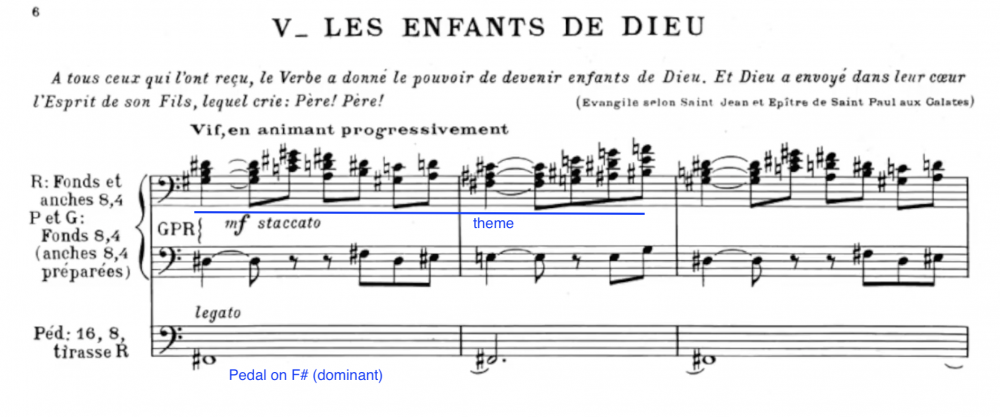

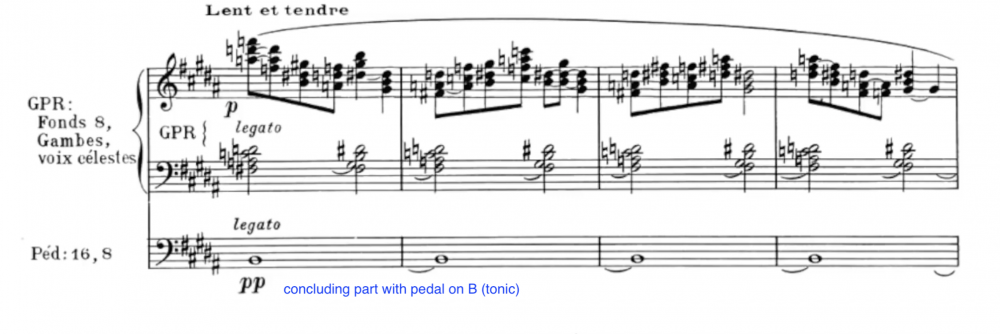
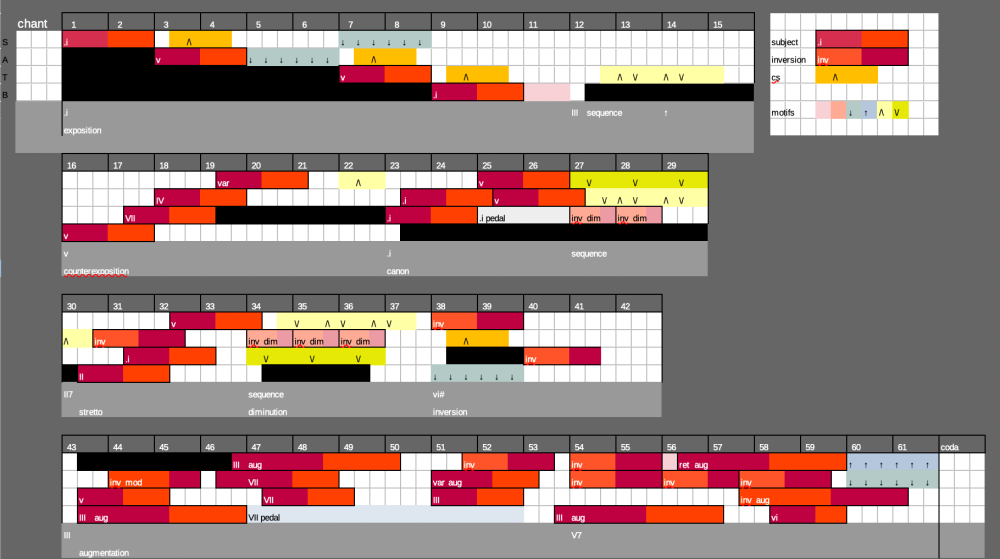



.thumb.jpg.e5f26b712b4f9622f521b10d8a53c6d6.jpg)

